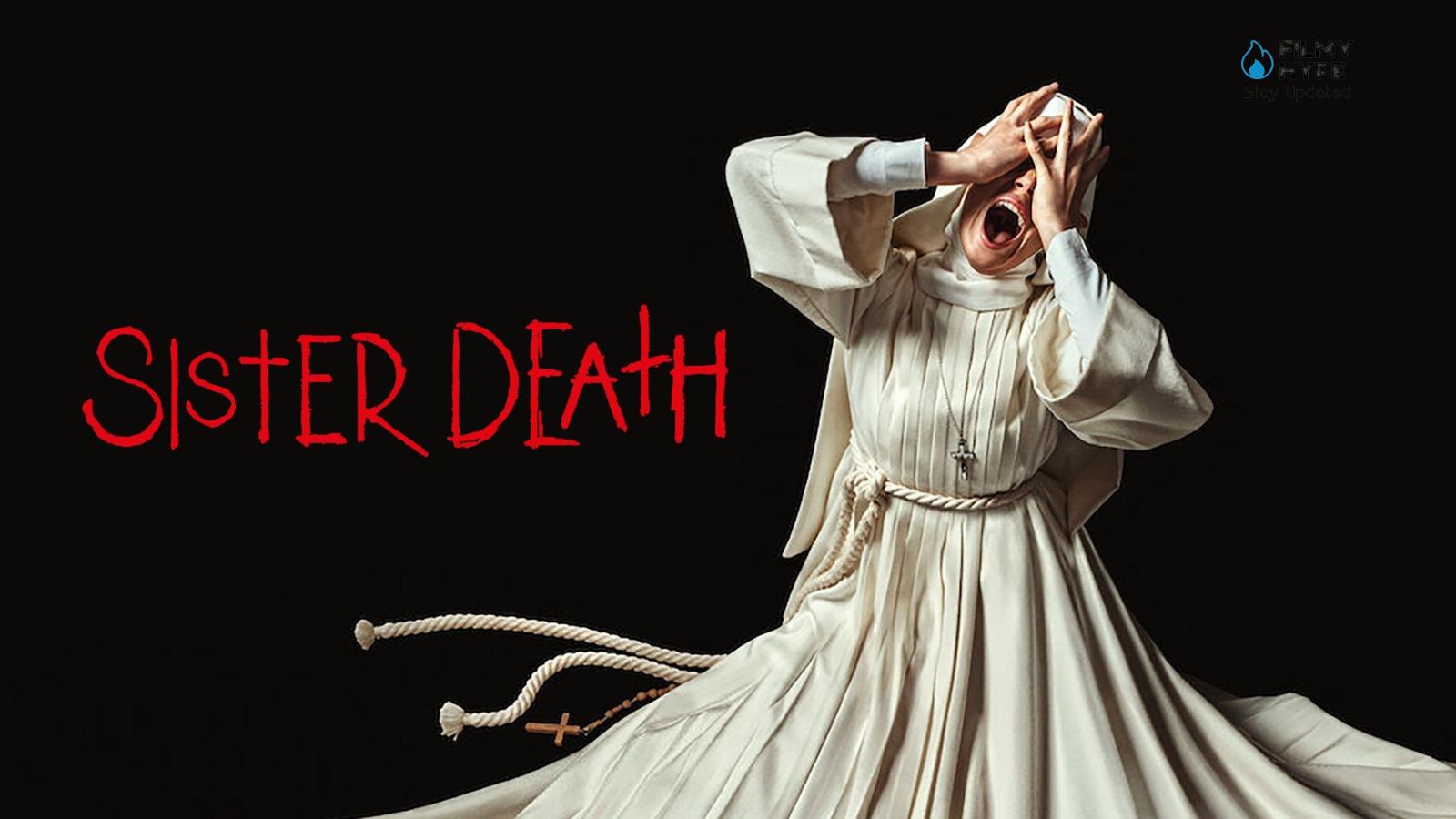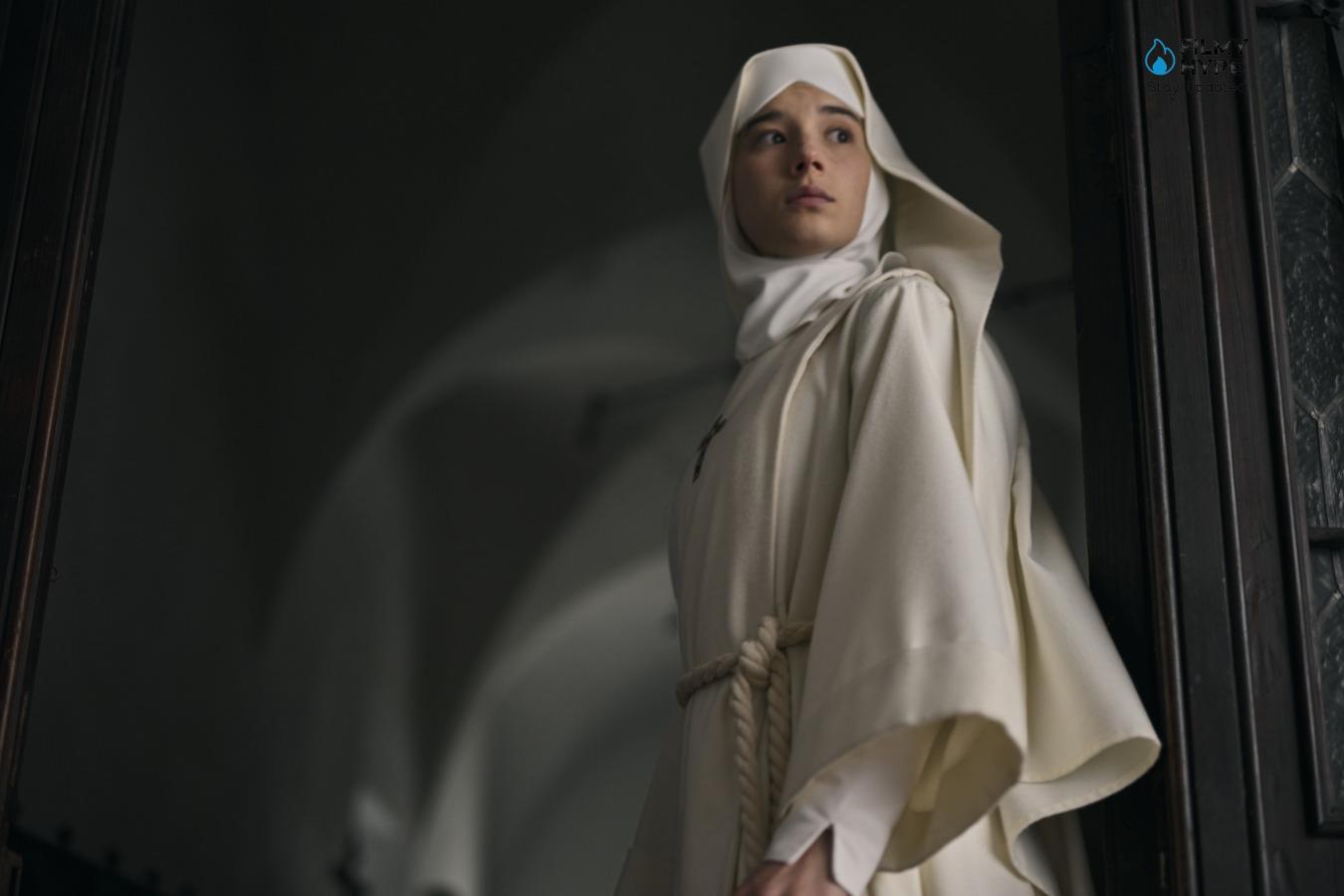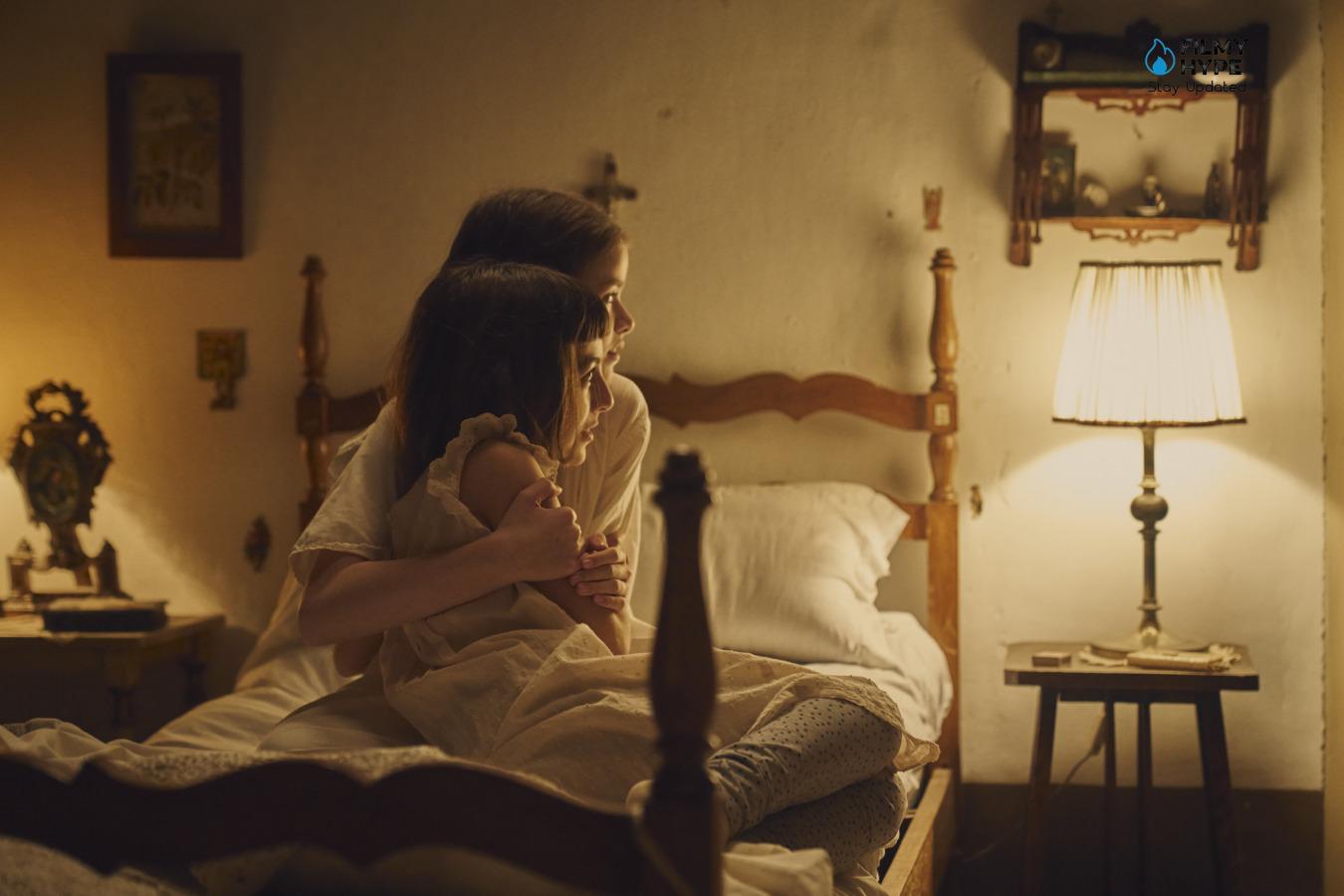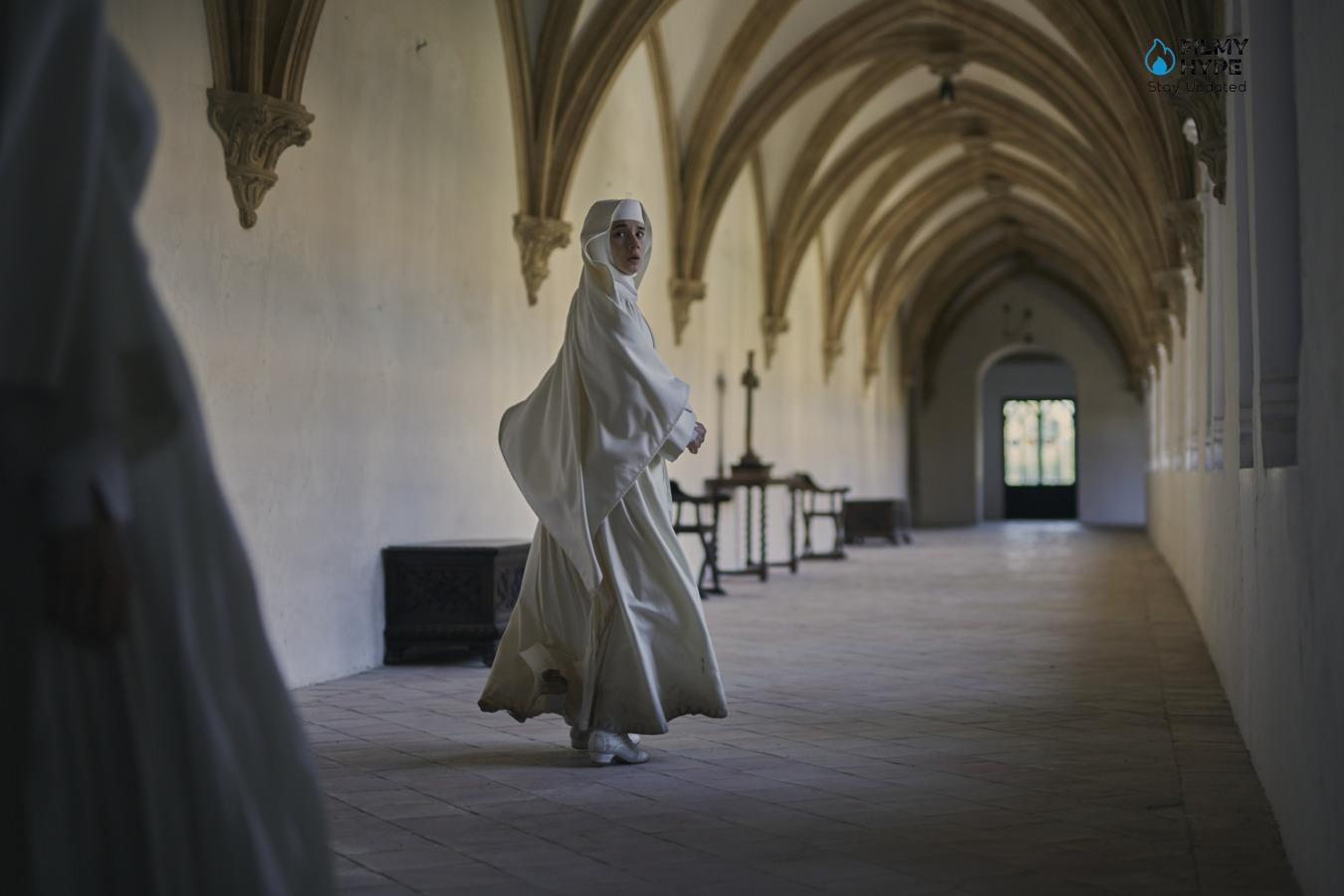Sister Death Review: Dark and Atmospheric Film That Will Keep You On The Edge Of Your Sea
Cast: Aria Bedmar, Almudena Amor, Maru Valdivielso, Luisa Merelas
Director: Paco Plaza
Streaming Platform: Netflix
Filmyhype.com Ratings: 4/5 (four stars) [yasr_overall_rating size=”large”]
Sister Death available from October 27th on the streaming platform, is the new terrifying horror prequel to Veronica directed by the Spanish director Paco Plaza, known for the films Rec and Rec 2. Religious imagery, whether Catholic or any other creed, is certainly capable, if used within a film of terror, of touching the viewer more deeply than many other horror ideas. This is because these are common and shared beliefs, associated not with Evil but with absolute Good, the divine one. Precisely for this reason films like The Nun (which is part of the shared universe of The Conjuring) manage to be so disturbing because they take symbols of purity, goodness, and unconditional altruism and transform them into something dark, corrupt, and thirsty for blood.

Even the new film by the Spanish Paco Plaza, a director known for cult horror films like REC, starts precisely from these elements: the director uses one of the characters from another of his films for Netflix, the convincing Veronica, to create a new story, set in a convent in the period immediately following the Second World War. As we will see in this review of Sister Death, as in Veronica, Paco Plaza expertly builds tension, masterfully weaving extremely disturbing atmospheres. The viewer is immediately drawn into the historical context in which the story is set, in which the stain of the horrors of the War has transformed into a disease almost impossible to heal: between the excellent interpretation of the protagonist, the directorial mastery of Plaza ( some sequences are visually truly impressive) and a well-developed plot, Sister Death is a film that will leave a lasting impression on the viewer. Too bad it’s not as scary as we initially expected, given the premises from which the story starts.
Sister Death Review: The Story Plot
Sister Narcisa arrives in an isolated convent, a novice who as a child was known throughout Spain for having witnessed apparitions of the Virgin and having helped many faithful. The period is that of the immediate post-war period, the war conflict left its terrible marks on what was once a cloistered convent and which today has been transformed into a school for poor girls, always run by nuns. Some of the sisters who welcome Narcisa have lived there since before the War and remember its horrors perfectly. Horrors which, as Narcisa immediately realizes, continue to hover like dark presences in her silent corridors. In her room, even, her objects move around without reason and disturbing noises wake her up in the middle of the night. The young students at the school then talk about a little girl who persecutes them and with whom ” you must not play, otherwise you will be cursed “. But who is Sister Socorro, of whom Narcisa found a photo hidden in her room, and what links her to the mysterious entities that populate the convent?
Sister Death Review and Analysis
From the first minutes of the film, which lasts about an hour and a half, we feel a horror atmosphere that becomes more and more suffocating, but slowly. Between secrets and newspaper articles that are shown, it could be defined as a thriller if it weren’t for the undeniable supernatural events that take place in the school. The photography helps us a lot to make us understand what will scare us and makes the air increasingly rarefied throughout the film, such as the use of the color white, belonging to The Nuns present and the walls of the building hit by strong poltergeists. Narcisa, also thanks to her past as a “holy child”, which is however never really explained, but we can guess that at an early age, she was capable of having supernatural visions, which are said to be the work of God, while others attribute the source of his powers be damned.

But Narcisa discovers more and more secrets about the school and her past, especially about her former nun roommate who lived in the same room as her and who seems to torment the girls who live in the school building. One of these, Rosa, together with her sister, will help Narcisa understand what the Mother Superior and Sister Julia are trying to hide, from the one who, despite refusing to believe it, can unravel the mysteries that surround the school. About halfway through the film, we begin to fear the strangest and most disturbing thing that happens inside those walls, after a failed attempt with Rosa to see what the little girl manages to witness, namely the spirit of this Nun, and… As we anticipated at the beginning, Sister Death does not strike the viewer with the fear it is incapable of instilling in him: the scary sequences are there, and they are also well constructed, but overall, the film is more capable of disturbing than of making the viewer jump in their seat.
If it’s not the shock at all costs that you’re looking for, however, Paco Plaza’s film will enter you with its chilling atmosphere and with a plot that intrigues and captures you right from the start. The starting point of this story is the horrors of war and how these have marked both the characters and the world around them: what happened has turned into an incurable disease, into a stain that spreads but cannot be erased. Religion, in this case, is portrayed not as a source of relief for the pain caused by war and conflict, but as a suffocating force interested only in burying and hiding, rather than healing. Here too – as in The Nun, even if it is a completely different work – we experience the overturning of what is sacred into something completely profane, and it is from this that the horror at the center of this story develops. Plaza’s directorial mastery, as we were saying, summarizes all these themes in truly impressive visual sequences, which mix the typical elements of horror with religious iconography, giving life to imagery that is unique in its way.
It is Aria Bedmar’s Narcisa who gives strength to this story, the young actress gives life to an intense and complex character, tormented by doubts and unsure of the path she has chosen. What does it mean for Narcisa to have been the creator of a miracle when she was a child, how did this change her life? Are grades your path? Bedamar is particularly convincing in her interpretation of the young novice, who shows all her strength in an unexpected but particularly incisive ending. The very ending – in which we also find the direct connection with Plaza’s other film, Veronica – perfectly pulls the threads of the film, underlining the importance of historical memory and the awareness of one’s mistakes: if one does everything to forget the past, to bury its horrors, sooner or later these will certainly return and ask for a very high bill to pay.

His shocking death, inexplicable from every point of view due to the way it happens and which will certainly remind the two Sisters of past events who try to hide it at all costs, puts Narcisa in a state of tremendous anguish, she goes to confession, as already shown once in the film; but now, instead of the Father’s deep voice responding to her doubts and anxieties, we hear a change in intonation and sense that it is a dark presence, probably that of the Devil. And consequently, a demonstration of hundreds of eyes that observe Narcisa through the holes of the confessional that blame her for Rosa’s death, accentuate her anguish almost feeding on it and enjoying her suffering. To then hold her, touch her, and scratch her with hands that always emerge from the confessional.
However, Narcisa wakes up in her bed, tormented by increasingly nagging poltergeists and visions that only she seems to have, or that she is unable to see. Another side that makes us anxious in the film is precisely this, in other films we almost always manage to see what the protagonists who are victims of demonic presences or terrifying visions see, but here we witness both possibilities. In Sister Death, we fear what Narcisa sees but also what she cannot see. And as the devil suggests to him, one day when there is an Eclipse, and Narcisa is forced to leave, on her way she stops in front of the sun, much like when she had visions as a child, she kneels and stares at the sun until it burned the retinas of her eyes, making her blind.
From here, Narcissa is finally able to see everything that happened in the past, and understands that The Nun who torments the building, was a victim of rape and became pregnant, was forced to hide her daughter’s existence from the other nuns; while, a few years later, the daughter of The Nun who has become a child is ill and her only salvation would be to take her to a hospital. Her nuns try to calm her down and lower her temperature by placing her in a tub, where she hits her head and dies. Thus, the mother, desperate for the tragic end of her daughter, decides to hang herself, we see the same chair fall after the hanging, which Narcisa saw, victim of this poltergeist every evening.
After the onset of these visions, Narcisa begins a revenge that takes place between past and present, almost in the middle of a confusing timeline in which she physically opens the door to The Nun who in the past tried to go out and save her daughter; but now, her revenge against Mother Superior and Sister Julia occurs. One of whom dies in front of the altar, drowning in the past, in the same tub in which The Nun‘s daughter died, and the other dies crushed surrounded by religious statues, crushed by the statue of St. Michael the Archangel almost as if to recall the famous oil painting on canvas, by Raffaele Sanzio, in which Saint Michael defeats Satan, dated 1518.

The film, therefore, deals with the revenge of “a nun against other nuns”, but driven by maternal love, obviously evil and toxic, which however reflects what any vengeful spirit would do, and in this film, it succeeds in its aim thanks to the help of the protagonist Narcisa. For some scenes and settings, the style used to scare the audience to death reminds us of a lot of certain old horror films, such as Suspiria. There are some scenes featuring The Nun that were similar to those in The Nun, but these two films may have been inspired by each other, as Veronica (the prequel to Sister Death) came out a year before the first The Nun. However, Sister Death has its own identity as a Horror film that deals with many unconscious fears and takes place in a more or less religious setting, which together with the special effects, makes the story even darker than it is.
It is certainly a Horror made with intellect, where much more frightening fears than a simple jumpscare were used to terrify the audience. And the degree of terror is, if not equal, very close to that conveyed by Veronica, made in 2017. The film ends with Narcissa, who years later shows up at a school, where she exchanges a knowing look with what we think is Veronica, the same girl from the film of the same name released in 2017 to which Sister Death acts as a Prequel, at that moment together with her friend, who she renames Sister Narcisa, Sister Death. However, Narcisa’s past as a “holy child” is never really explained, but we can guess that at an early age, she was capable of having supernatural visions, which are said to be the work of God, while others attribute the source of her powers to the devil. We would have liked to explore this part a little more, but maybe we’ll see it again with a prequel to the prequel. And will you watch Sister Death? It would be perfect to watch on Halloween night, in the company of popcorn and sweets, while watching the terrifying Sister Death film! Let us know everything in the comments and continue to follow us!
Sister Death Review: The Last Words
Sister Death is Paco Plaza’s new convincing horror film, a prequel to his previous film Veronica. It’s not a particularly scary film, but the tension is well constructed and Plaza’s directorial mastery is evident in several visually impressive sequences. Sister Death is a dark and atmospheric film that will keep you on the edge of your seat. The performances are excellent, and the visuals are stunning. However, the film is not for the faint of heart. It deals with some very dark and disturbing themes, so be prepared for that. If you’re a fan of supernatural horror, then Sister Death is worth checking out. Just be warned that it’s a pretty intense film.

Sister Death Review: Dark and Atmospheric Film That Will Keep You On The Edge Of Your Sea | Filmyhype

Director: Paco Plaza
Date Created: 2023-10-27 19:04
4
Pros
- Excellent performances from the cast
- Stunning visuals and cinematography
- Well-written and suspenseful plot
- Faithful adaptation of the source material
Cons
- Slow pacing at times
- Abrupt ending
- Dark and disturbing themes

